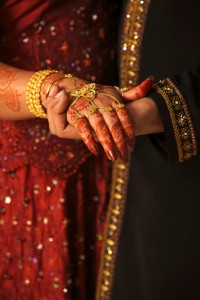Weddings Traditions from Around the World
Summer is the most popular season for weddings, not only in the United States, but also worldwide. Pick up your boarding pass and wedding invitation, as Little Passports takes you to learn about wedding traditions around the world!
Brides spend a good amount of time looking for the perfect wedding dress to walk down the aisle in, often taking weeks to visit different shops and try on those that appeal to her. However, Chinese brides dont wear just one wedding dress they wear two or even three wedding dresses! The first, a qipao dress, is usually slim-fitted and red to symbolize good luck; the second is a Western white wedding dress; and the third may be a color of her choice for dancing or to acknowledge guests after the reception.
Another important tradition in Chinese weddings is the tea ceremony. This is when the bride and groom get together with the grooms family and pour them tea as a formal introduction to the family. The process starts with giving tea to the grooms parents, and then continues down the line from oldest relative to youngest (including grandparents, aunts, uncles, siblings, etc.). The bride and groom can also serve tea to the brides family, either after giving tea to the groom, or at an earlier time before the official ceremony.
Our next country is India, where the bride is artistically adorned with henna. The night before the wedding, the bride and her friends gather to have a henna party. A skilled henna artist comes to their house and paints beautiful and intricate designs on the womens hands. Some common patterns include flowers, geometric shapes, or animals. The henna artist may even hide the grooms name in the design, and sometimes the wedding cant start until the groom finds his name!
In Korea, the groom gives an interesting gift to his future mother-in-law: a goose! In historic times a live goose was often gifted, but now the groom usually buys a wooden goose. This tradition began because wild geese couples stay together for life, so the gift is a promise from the groom to take care of his wife forever. The bride and groom will also wear traditional clothes called hanbok, which consists of a brightly colored two-piece outfit with simple lines and strings (as seen below). Koreans will also have a Pyebaek ceremony, where the bride and groom sit in front of their parents and pour either tea or rice wine while the parents give advice, wisdom or a wish to the newly married couple. Finally, Korean women do not take the last names of their husbands, which is common in other countries. This is because there are only about 300 or so surnames in Korea, and each family has an extensive lineage that they want to maintain.

